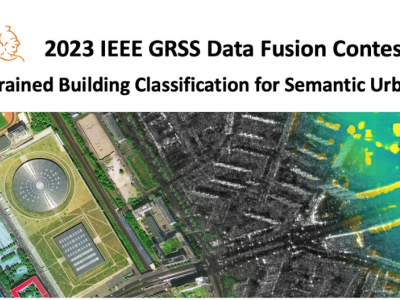Image Fusion

The "Multi-modal Sentiment Analysis Dataset for Urdu Language Opinion Videos" is a valuable resource aimed at advancing research in sentiment analysis, natural language processing, and multimedia content understanding. This dataset is specifically curated to cater to the unique context of Urdu language opinion videos, a dynamic and influential content category in the digital landscape.
Dataset Description:
- Categories:
 331 Views
331 ViewsThe Numerical Latin Letters (DNLL) dataset consists of Latin numeric letters organized into 26 distinct letter classes, corresponding to the Latin alphabet. Each class within this dataset encompasses multiple letter forms, resulting in a diverse and extensive collection. These letters vary in color, size, writing style, thickness, background, orientation, luminosity, and other attributes, making the dataset highly comprehensive and rich.
- Categories:
 519 Views
519 ViewsMapping millions of buried landmines rapidly and removing them cost-effectively is supremely important to avoid their potential risks and ease this labour-intensive task. Deploying uninhabited vehicles equipped with multiple remote sensing modalities seems to be an ideal option for performing this task in a non-invasive fashion. This report provides researchers with vision-based remote sensing imagery datasets obtained from a real landmine field in Croatia that incorporated an autonomous uninhabited aerial vehicle (UAV), the so-called LMUAV.
- Categories:
 1383 Views
1383 Views
Blade damage inspection without stopping the normal operation of wind turbines has significant economic value. This study proposes an AI-based method AQUADA-Seg to segment the images of blades from complex backgrounds by fusing optical and thermal videos taken from normal operating wind turbines. The method follows an encoder-decoder architecture and uses both optical and thermal videos to overcome the challenges associated with field application.
- Categories:
 1195 Views
1195 ViewsThe dataset contains thermal and visible images of volunteers taken in different places to develop face detection algorithms. By providing both thermal and visible face images in a single dataset, our dataset empowers researchers, scientists, and developers to leverage the strengths of each image type. The dataset can be utilized for tasks like biometric authentication, emotion recognition, facial expression analysis, age estimation, and gender classification.
- Categories:
 1040 Views
1040 Views
This dataset has 32,000 remote sensing images in UAV scenes of tiny objects with labels.
- Categories:
 346 Views
346 ViewsThe Udacity Autonomous Vehicle Dataset is a widely used dataset that contains a large number of images and corresponding steering angle information. In IA-Udacity, we added lane marking annotation information to further improve the accuracy and reliability of the model, making it more suitable for lane detection and steering decisions in autonomous driving scenarios.
- Categories:
 280 Views
280 Views
In order to contribute to the development of automatic methods for the detection of bacilli, TBimages is an image dataset composed of two subsets: TbImages_SS1 contains 10 images per field, of different focal depths, and aims to support the definition of autofocus metrics and also the development of extended focus imaging methods to facilitate the detection of bacilli in smear microscopy imaging. TbImages_SS2 aims to support the development of automatic bacilli detection.
- Categories:
 1771 Views
1771 Views




